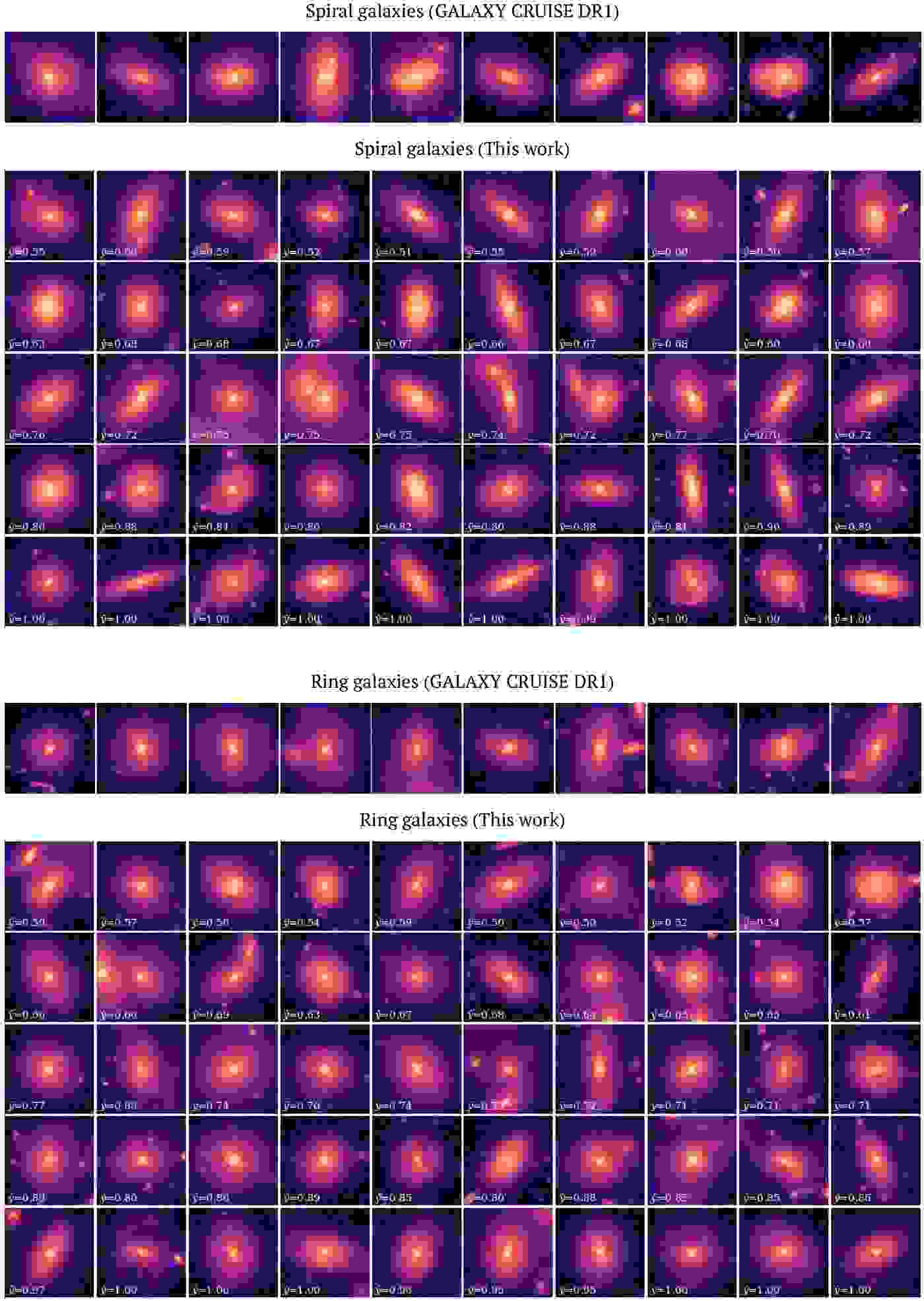Curious minds uncover 30,000 ring galaxies with the help of artificial intelligence

Collaboration between citizen astronomers, artificial intelligence, and the Subaru Telescope sheds light on ring galaxies
In an intriguing convergence of citizen science and cutting-edge technology, astronomers have made an astonishing discovery of approximately 30,000 ring galaxies alongside some 400,000 spiral galaxies in data obtained from the renowned Subaru Telescope. By leveraging the power of artificial intelligence (AI) and combining it with the latest supercomputer simulations, this groundbreaking research is pushing the boundaries of our understanding of the cosmos.
The project, a collaboration between professional astronomers and citizen astronomers, capitalizes on the collective efforts of more than 10,000 volunteers involved in the citizen science initiative "GALAXY CRUISE." With the Subaru Telescope's vast datasets containing a multitude of galaxies, it became clear that traditional manual classification would be an arduous task. That's where the potential of AI stepped in.
Artificial Intelligence possesses the remarkable capability to swiftly analyze and classify data. However, before embarking on the galactic classification, the AI system must first be trained on a wealth of pre-existing examples prepared by humans. In this case, an AI model was developed and trained by a team led by Rhythm Shimakawa, associate professor at Waseda University, using a set of 20,000 galaxies classified by citizen astronomers within the GALAXY CRUISE project.
Once the AI was primed with this knowledge, it was unleashed upon the entirety of the Subaru Telescope's dataset, which comprised an awe-inspiring 700,000 galaxies. Through this process, the AI successfully classified 400,000 galaxies as spiral galaxies and identified an astonishing 30,000 ring galaxies. This invaluable dataset of ring galaxies, accounting for less than 5% of all galaxies, provided scientists with a substantial sample for detailed statistical analysis and comparison.
What is even more remarkable is that the statistical analysis revealed that ring galaxies exhibit intermediate characteristics between spiral and elliptical galaxies. These findings align with the latest supercomputer simulations and provide another intriguing hint about the intricacies of galactic evolution.
Rhythm Shimakawa, the lead researcher, expressed deep gratitude towards the GALAXY CRUISE project and the invaluable contributions of citizen astronomers. Shimakawa emphasized the crucial role played by the project's data, stating, "Although AI classification takes less than one hour even for 700,000 galaxies, this work cannot be done without the data collected by GALAXY CRUISE over the past two years. We would like to thank all the citizen astronomers who participate in the project. I hope to see more collaborative outcomes in the future."
The groundbreaking results of this study were recently published as "GALAXY CRUISE: Spiral and ring classifications for bright galaxies at z = 0.01-0.3" in the academic journal Publications of the Astronomical Society of Japan (PASJ) on January 29, 2024.
This ground-breaking research has drawn attention and admiration from diverse perspectives within Japan. It highlights the immense potential of combining AI technology, citizen science, and advanced telescopes like the Subaru Telescope to unlock new frontiers of astronomical discovery. The involvement of citizen astronomers in the GALAXY CRUISE project showcases the power of collective human intellect in pushing the boundaries of scientific exploration.
The Subaru Telescope, a remarkable optical-infrared telescope operated by the National Astronomical Observatory of Japan, National Institutes of Natural Sciences, with the support of the MEXT Project to Promote Large Scientific Frontiers, played a pivotal role in this groundbreaking endeavor. Situated in Maunakea, Hawaii, the observatory offers a unique vantage point to unravel the mysteries of the universe, combining cultural, historical, and natural significance.
This latest discovery opens up exciting possibilities for further exploration into the remarkable world of ring galaxies and encourages scientists to continue pushing the boundaries of what artificial intelligence can achieve in deepening our understanding of the cosmos.

 How to resolve AdBlock issue?
How to resolve AdBlock issue?